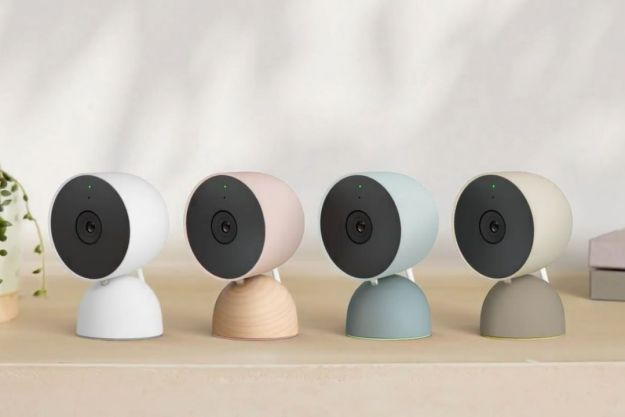Can you imagine a world where drones are flying around your home? Ring sure can. At a recent invite-only press event, Ring, the Amazon-owned company, announced the Ring Always Home Cam, a $250 indoor security drone that you can control from your phone. Did you forget to turn the stove off? What did you set the thermostat to before you left the house this morning? Is the door locked? These are questions that a quick flight with your Always Home will be able to answer. Let’s dive deeper.
What is the Ring Always Home Cam?
Due to hit shelves sometime in 2021, the Always Home will sport a 1080p camera, an encased propeller design, an audible motor for security purposes (you and the cat burglars will be able to hear the Always Home operating), and a docking station that charges the drone. For those concerned with collisions with valuables, walls, and windows, the Always Home will be equipped with an infrared object-avoidance system. While Ring has had a few troubles in the past with user data, the camera itself only records in-flight. When docked, the docking station itself blocks video from being captured.

How does the Ring Always Home Cam work?
Think of the Always Home as a fine blend of offense and defense. On the offense end, you can grab your phone, launch the app, and watch the action from a first-person view. When you’re done viewing, you can tell the drone to re-dock (or it’ll automatically go back on its own). It’s the defensive end that’s a bit more impressive. When you first unbox the drone, you’ll be tasked with creating a map of your home through the Ring app, which you’ll then use to pinpoint locations for the drone to travel to. But it also sounds like there will be an option for regularly-scheduled custom flights. This could be something like setting the drone to un-dock and fly around the main floor of your home for a quick patrol route. However, it should be noted that it cannot be manually controlled.
The Always Home will also be compatible with Ring Alarm, so the drone can react to motion events triggered by various sensors in your home. Say someone falls in the living room, and one of your Ring indoor cams picks up on it. The motion event will trigger the Always Home to automatically fly to the living room, providing an aerial vantage that you can then take control of. Like many other smart home devices, the Always Home may prove to be the next best geriatrics monitor — besides perhaps Amazon’s new Alexa Care Hub that keeps you connected with loved ones.
How long can it fly?
While Amazon’s event didn’t detail the Ring Always Home Cam’s flight time, we were told that it’s rated to offer approximately five minutes’ worth of flight time. It’s certainly short when compared to enthusiast drones on the market, but considering how it’ll automatically go on its own predetermined flight route, it should be able to go to where it needs to and back quickly. As for its recharge time, we’re told that it requires roughly an hour, which means that it should be activated for the most important events.

Flying smoothly through the home is also important, as you don’t want it to accidentally bump into something and perhaps fail. Ring tells us that it features sensors that would help it to avoid obstacles. Since it flies autonomously, these sensors will help it to determine an optimal path in the event that it comes across something.
Availability, price, and release date
It’ll be interesting to see what other kinds of features the Always Home will be capable of. Things like two-way talk, custom motion zones, and Alexa voice controls are a big part of Ring’s existing lineup, and it would definitely be cool for these functions to migrate over to the drone. Only time will tell, though. With no hard release date, and permissions still un-granted by the FCC, we could be waiting a while for the Always Home. But as soon as we learn more, we’ll be sure to update this piece. It’s going to retail for $250 when it launches, which is certainly more than some of its traditional security cameras — but warranted, given the uniqueness of the product.
Editors' Recommendations
- Blink Mini 2 vs. Ring Stick Up Cam Pro: Which is the best security camera?
- Does the Pan-Tilt Mount work with the Blink Mini 2?
- How to fix the most common Blink Mini 2 problems
- Best security camera deals: Ring, Arlo, Blink and more on sale
- Blink Mini 2 vs. Nest Cam (Indoor): Which is the better affordable security camera?




